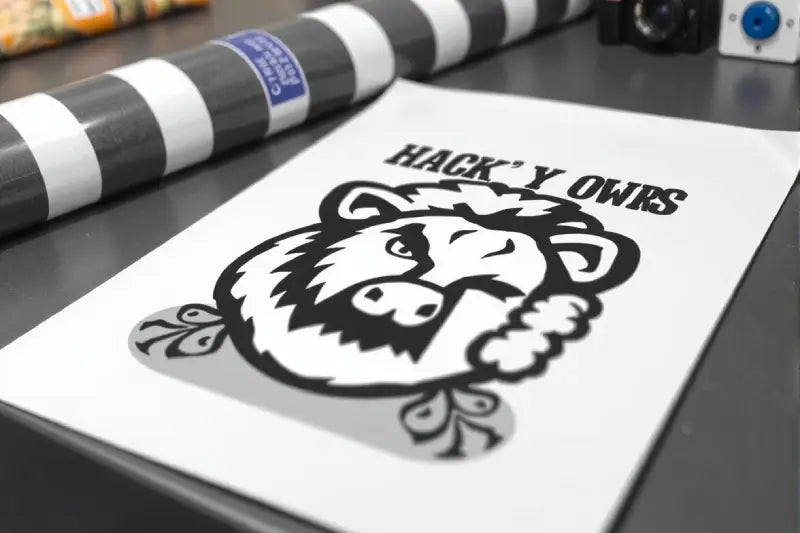Whether you're new to DTF printing or have a big setup, organizing how you store your DTF transfers is super important. Natural environmental conditions, such as heat and dampness, can damage a large number of prints that are ready to go. If you've noticed edges curling, colors fading, or items not sticking properly, poor storage is likely to blame.
But don't worry! There are easy ways to avoid this. This post has 10 DTF transfer storage tips to keep your designs looking great, flat, and ready to use when you need them. These tricks work for both cold peel and hot peel films and help your transfers last longer, so all your hard work pays off.
Why DTF Transfers Storage Tips Matter
DTF transfers are not made for heat, dampness, or dust; these environmental elements can ruin a transfer. How to store heat transfers the right way means your prints stay clear, the powder sticks well, and the colors stay bright. Plus, it stops wrinkles and bends. DTF films use special glues and inks, so even small changes in the room can mess up the final print.
Keeping transfers flat, clean, and in a good space means they will press perfectly. It's imperative for large orders, designs tailored for specific times of the year, or leftover sheets from major print jobs. Whether it’s cold peel or hot peel, these are the DTF transfer handling instructions that save you time and money, helping you get things done right.
1. Keep it Cool and Dry
DTF transfers hate dampness and heat. The optimal temperature for storing DTF transfers is around 60°F–75°F (15°C–24°C), with the proper humidity for DTF transfer storage maintained below 50%. Avoid using basements, attics, or areas with significant temperature fluctuations. Too much dampness softens the glue powder, causing the print to stick or print poorly. Too much heat can warp the film. A dry closet or cabinet is the best way to store DTF transfers to keep them working well.
2. Lay Transfers Flat
One of the most important tips for preserving DTF transfers is to lay DTF transfers flat. Rolling them can cause bends or lines that interfere with even pressing. Uneven pressure can lead to peeling or poor adhesion. Use trays, drawers, or folders. For large stacks, don't go overboard, the weight can warp the film. This method is one that improves overall print quality.
3. No Sunlight
The sun can ruin both the ink and the film. Keep your DTF transfers in a shaded or closed space. Use dark folders or storage bins to block out light. Even a short time in the sun can fade colors, especially for UV DTF transfers. This is a key step to avoid DTF transfer cracking and fading, helping maintain their quality throughout the shelf life of DTF transfers.
4. Label Each One
Labeling helps you track and rotate your inventory. DTF transfers generally last between 6–12 months if stored properly, so it’s essential to know how long DTF transfers last in storage. Add the date and design name using a thin marker or sticker. Also, sort them by hot peel and cold peel so you follow proper DTF transfer handling when working with them.
5. Use Anti-Static Sheets
PET film can build up static, especially in dry environments. That pulls in dust and makes sheets stick. Using anti-static folders helps with this. It’s a great trick to keep DTF transfers dust-free and prevent lint or particles from ruining detailed designs. This is especially useful if you’re selling finished transfers or applying them on dark fabrics.
6. Stack No More Than 25
Too much weight can ruin the glue and ink, especially on designs with thick layers. Don’t stack more than 25 transfers together. If you have more, separate stacks with parchment or paper. This is a simple step that’s part of the DTF transfer handling instructions pros use to avoid damage in storage and keep everything press-ready.
7. Use Ziplock Bags
Ziplock bags are a smart, low-cost way to store DTF transfers and protect them from moisture, dust, and air. Put 10–15 sheets in each bag, separated by paper. This is good for small shops or home setups. Just avoid warm rooms where condensation might form. This method extends the shelf life of DTF transfers while keeping them organized and clean.
8. Don’t Bend Your Transfers
Folding or bending DTF sheets can damage the ink or adhesive powder. Even slight creases can lead to peeling or cracking. For large designs, use flat folders, art bins, or even poster storage frames. If you do accidentally fold one, test a small corner first. This helps you handle DTF transfers with more care and reduces print failure.
9. Keep Them Away From Chemicals
Keep all transfers away from harsh chemicals, such as cleaning products or paint. DTF films can absorb odors and fumes, which mess with adhesion and ink quality. If you work in a studio or garage, store your DTF films in a closed cabinet. Keeping transfers in a separate area is a must for proper DTF transfer handling and reliable final results.
10. Use Desiccants
Moisture ruins transfer over time, even if they seem fine at first. Use silica gel packs in your drawers or bins. This controls moisture and extends the shelf life of DTF transfers. Replace desiccants every 2–3 months. This is a key tip on how to handle DTF transfers and preserve adhesive strength and ink sharpness, especially in humid climates.
Final Thoughts
Even the best DTF transfer can fail if you don't store it right. These tips will help you get smoother presses and sharp results. Whether you're working with hot peel or cold peel transfers, following the best way to store DTF transfers is crucial. With just a few easy changes, your printing workflow will be easier, cleaner, and more consistent. Store it right, and press it clean every single time for quality results.
Not sure how your environment affects your DTF transfers? Try our DTF Sample Pack and UV DTF Sample Pack and put these storage tips to the test! Use the samples to try different setups, such as closet vs. shelf and ziplock vs. drawer. Learn what keeps them flat, vibrant, and press-ready!

